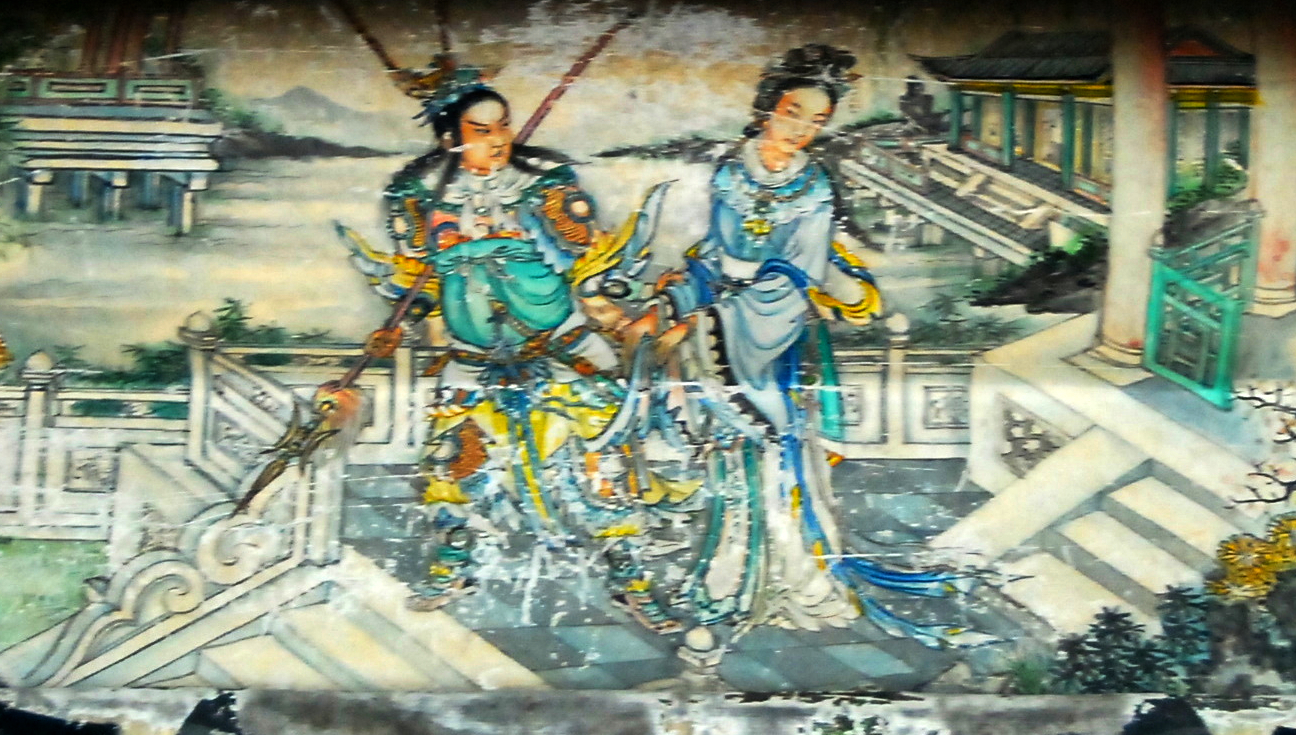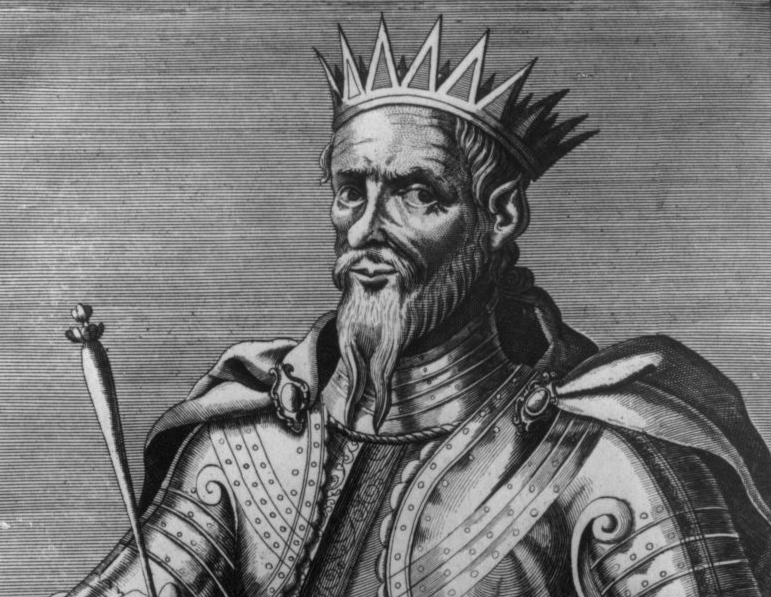Survival Of The Fittest
What makes for a great warrior? Is it tactics and strategy, battlefield success, or territories conquered? Really, it’s a combination of all these factors. Let’s have a look at some of history’s greatest warriors and which of these traits each of them exemplified.
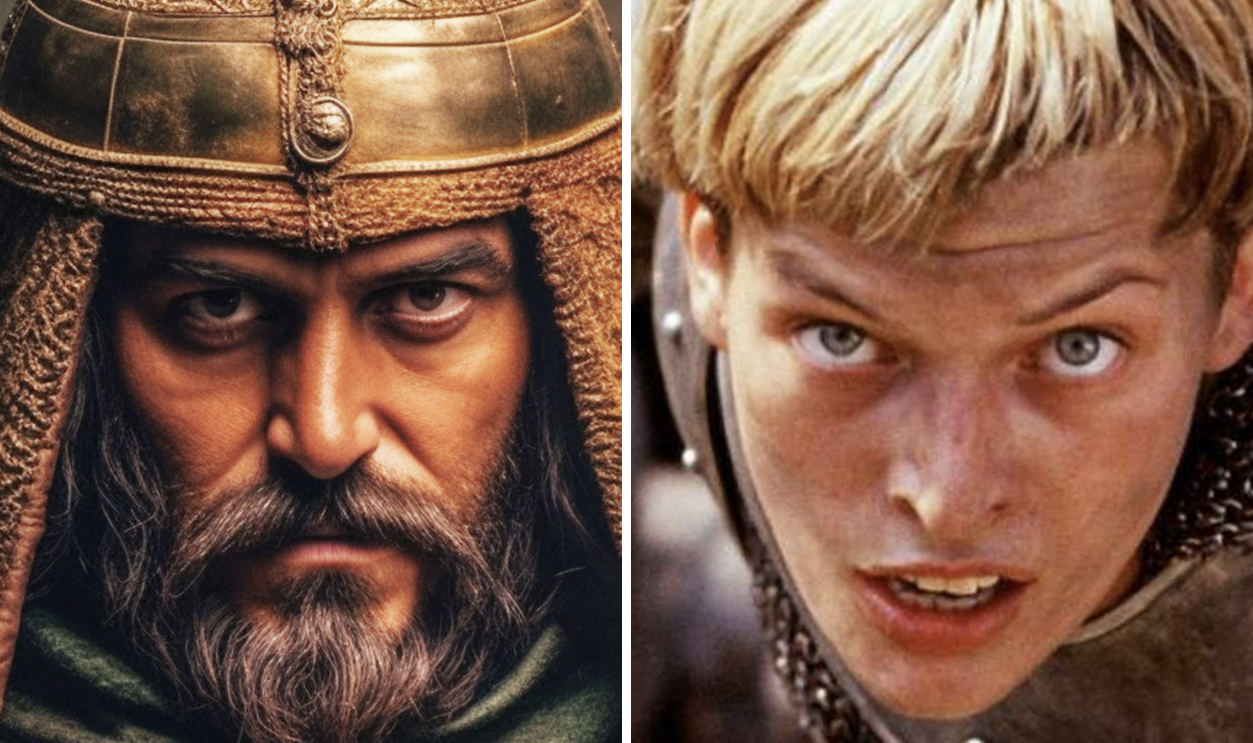
Alexander the Great
Even if you don’t know what he did, you’ve probably at least heard of Alexander the Great. A famed King of Macedon, Alexander accomplished incredible feats even though he only lived to the relatively young age of 33.
 Unknown Author, Wikimedia Commons
Unknown Author, Wikimedia Commons
Conquering the known world
Unlike many kings, Alexander participated in all the battles his armies fought. This legendary tactician overran the kingdoms of Persia, India, and Egypt, conquering what was considered the “known world” and spreading Greek culture to all the parts of his empire.
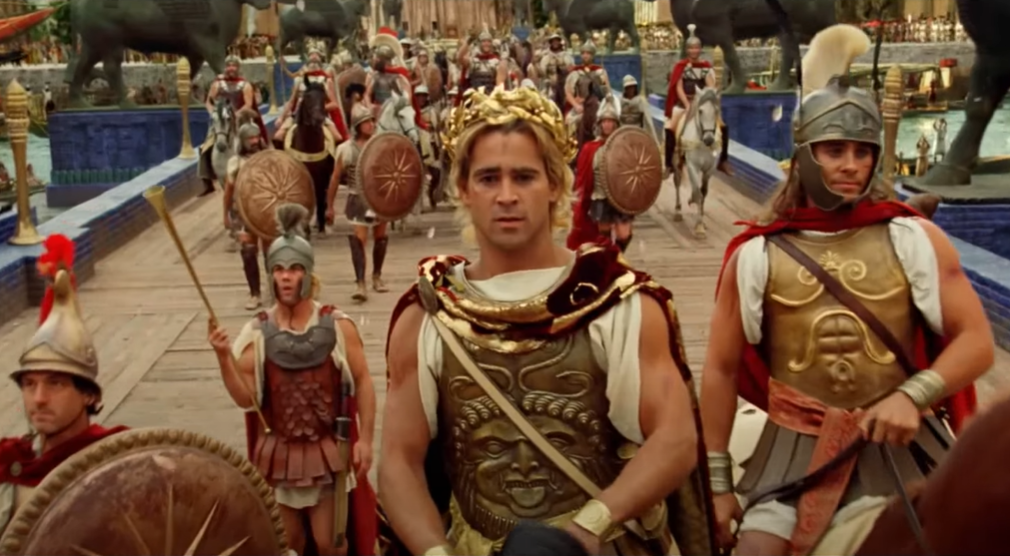 Warner Bros., Alexander (2004)
Warner Bros., Alexander (2004)
Cynane
Another fierce warrior of the ancient world, Cynane was the half-sister of Alexander the Great. This daughter of Philip II of Macedonia and Princess Audata of Illyria was trained by her mother in the ways of Illyrian warrior women.
Illyrian warrior woman
Cynane was so fierce a warrior that she led Macedonian armies and fought side-by-side with her brother Alexander. Her military training made her a great tactician as well as a formidable foe on the battlefield. Tales of her prowess include killing a rival queen “by her own hand”.
 Warner Bros., Alexander (2004)
Warner Bros., Alexander (2004)
Genghis Khan
A legendary leader and warrior of East Asia, Genghis Khan, like Alexander in the Middle East, conquered what was considered to be the known world at the time. His people believed he was sent from the heavens, and called him the Holy Warrior.
 National Palace Museum, Wikimedia Commons
National Palace Museum, Wikimedia Commons
The Mongolian Empire
At its height, the Mongolian Empire under Genghis Khan was made up of almost a quarter of the world’s population. Alongside brutal battle tactics, the great Khan used spy networks and psychological warfare as ways of expanding his empire and revolutionizing the ways of conquest.
 CTB Film Company, Mongol: The Rise of Genghis Khan (2007)
CTB Film Company, Mongol: The Rise of Genghis Khan (2007)
Julius Caesar
Probably the most famous of the Caesars of Ancient Rome, Julius was a decorated general and statesman. He left behind records of his strategies and campaigns, through which we have a better understanding of both the man and the time in which he lived.
 Lionel Royer, Wikimedia Commons
Lionel Royer, Wikimedia Commons
Empire builder
Julius Caesar led the Roman army on many conquests through Europe and the Middle East. One of his greatest achievements, though, was turning his army on Rome itself. He overthrew the government of the Roman Republic and established the Roman Empire with himself as Emperor.
Hannibal Barca
Considered by many classical historians to be one of the greatest generals who ever lived, Hannibal was a Carthaginian who stood in opposition to Rome and its expanding territories. His campaigns against Rome are the stuff of legend.
Conqueror of the Alps
The most famous of Hannibal’s campaigns was his crossing of the Alps into Northern Italy. This move surprised his Roman opponents, especially as Hannibal had managed to move not only soldiers but huge war elephants through the rugged mountain terrain.
 Heinrich Leutemann, Wikimedia Commons
Heinrich Leutemann, Wikimedia Commons
Richard the Lionheart
Richard was a king of England at a time when much military action was aimed at “reclaiming” the Holy Land for Christians. It is during the time that Richard was away crusading that the stories of Robin Hood became a part of British folklore.
 Merry-Joseph Blondel, Wikimedia Commons
Merry-Joseph Blondel, Wikimedia Commons
A crusading king
Rather than spending all his time sitting on a throne, Richard the Lionheart also led many military campaigns, including the Third Crusade. He was known as a great leader and strategist. He gained the name “Lionheart” as a result of showing uncommon daring and courage in battle.
 Wonderphil Entertainment, Richard the Lionheart: Rebellion (2015)
Wonderphil Entertainment, Richard the Lionheart: Rebellion (2015)
Leonidas I
Known in current times as the hero of the popular film 300, Leonidas I was a revered leader of Sparta and fought against the Persian army during its campaign against Greece. Like many great leaders of the ancient world, Leonidas fought on the frontlines alongside his soldiers.
Single-handed spartan
Perhaps the most famous story of Leonidas is of the Battle of Thermopylae. Legend has it that he led a small army of only 300 soldiers against the thousands of the Persian army. The Spartans were so fierce that they held the Persian army off until only Leonidas was left, eventually dying amongst his men.
Miyamoto Musashi
Miyamoto Musashi was a ronin, a samurai who had no master. He was renowned from a very early age as a master swordsman, and spent most of his life perfecting the art of the blade. His famous work A Book of Five Rings outlines his philosophies about swordplay and decapitation.
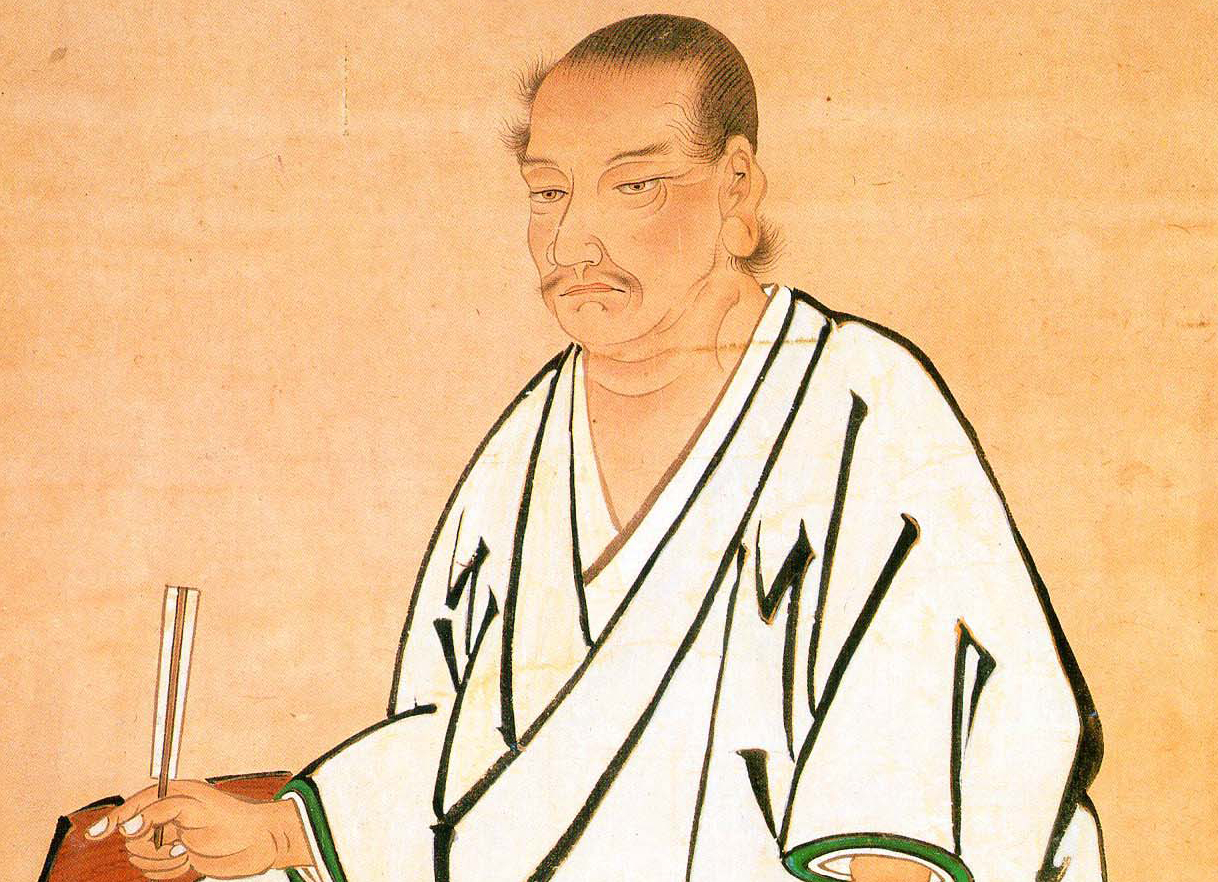 Unknown Author, Wikimedia Commons
Unknown Author, Wikimedia Commons
Two blades are better than one
Some historians and experts believe the Musashi was one of the greatest swordsmen to have ever lived. Over the course of his life he perfected a technique of using two blades at once. Study of this technique led to his contemplation and writing on the Zen of Decapitation.
 Miyamoto Musashi, Wikimedia Commons
Miyamoto Musashi, Wikimedia Commons
Saladin
Saladin ad-Din Yusuf ibn Ayyub was a famed leader and general, and the first sultan of both Egypt and Syria. He founded the Ayyubid dynasty in the Middle East, and was instrumental in the Muslim effort against the Crusaders in the Holy Land.
 Gustave Doré, Wikimedia Commons
Gustave Doré, Wikimedia Commons
Warrior of the Holy Land
Saladin is famous for having led an army against the crusaders who occupied Jerusalem and retaking the city. He faced the armies of Richard the Lionheart during the Third Crusade. Saladin’s forces eventually retreated, but only after causing heavy losses to the crusaders.
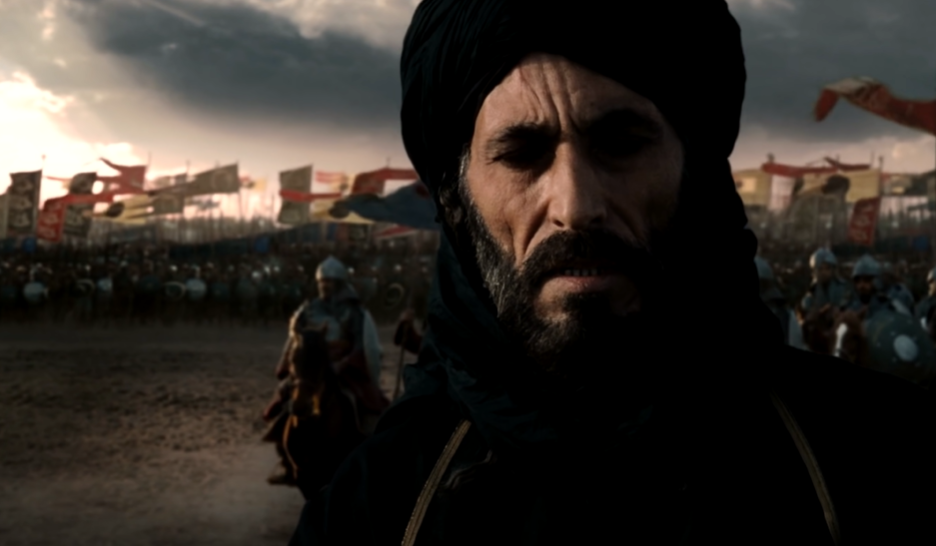 Twentieth Century, Kingdom of Heaven (2005)
Twentieth Century, Kingdom of Heaven (2005)
William Wallace
William Wallace’s story gained popular fame thanks to the Mel Gibson film Braveheart. This blockbuster brought attention to fearless warrior Wallace and his attempts to free Scotland from English rule.
Scottish independence
Though considered a part of the United Kingdom, Scotland has long sought independence, especially during the medieval period when England had conquered its northern neighbor. William Wallace fought until his death in the Wars of Scottish Independence to establish a free coutnry for his people.
 Daniel Maclise, Wikimedia Commons
Daniel Maclise, Wikimedia Commons
Joan of Arc
From humble origins, this peasant girl rose to become a prominent and inspiring leader to the French military forces. Joan led the French against the English, most famously at the Battle of Orléans during the Hundred Years’ War.
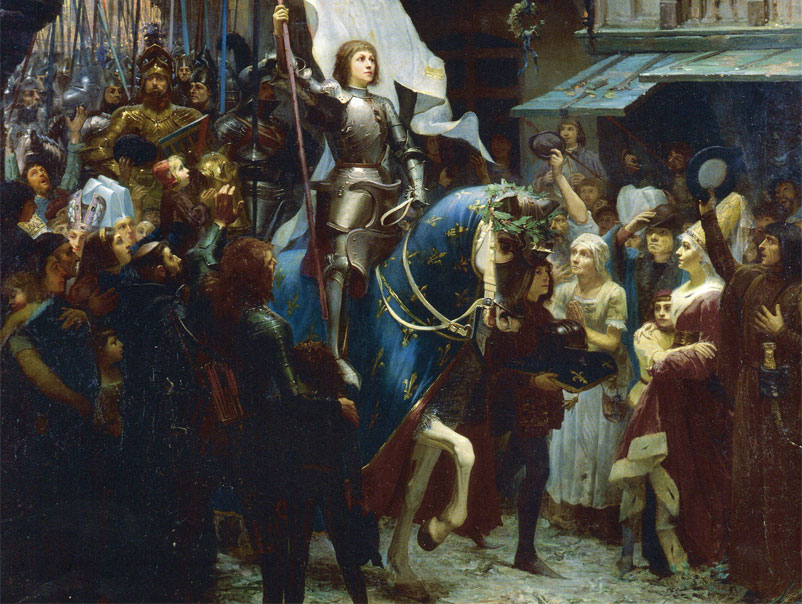 Jean-Jacques Scherrer, Wikimedia Commons
Jean-Jacques Scherrer, Wikimedia Commons
Warrior and saint
Joan of Arc's story is strongly influenced by her claimed spiritual encounters. She said she saw Saint Michael, Saint Catherine, and Saint Margaret, starting when she was just 13 and throughout her whole life.
According to Joan, these saints told her to back Charles VII and assist in getting his throne back from the English and their allies during the Hundred Years' War.
 Jean Pichore, Wikimedia Commons
Jean Pichore, Wikimedia Commons
Spurius Ligustinus
During its war with the Macedonian Empire, Rome’s leaders took the step of calling retired soldiers back into service. One of those called was Spurius Lignustinus, one of the most decorated soldiers in the history of the Roman army.
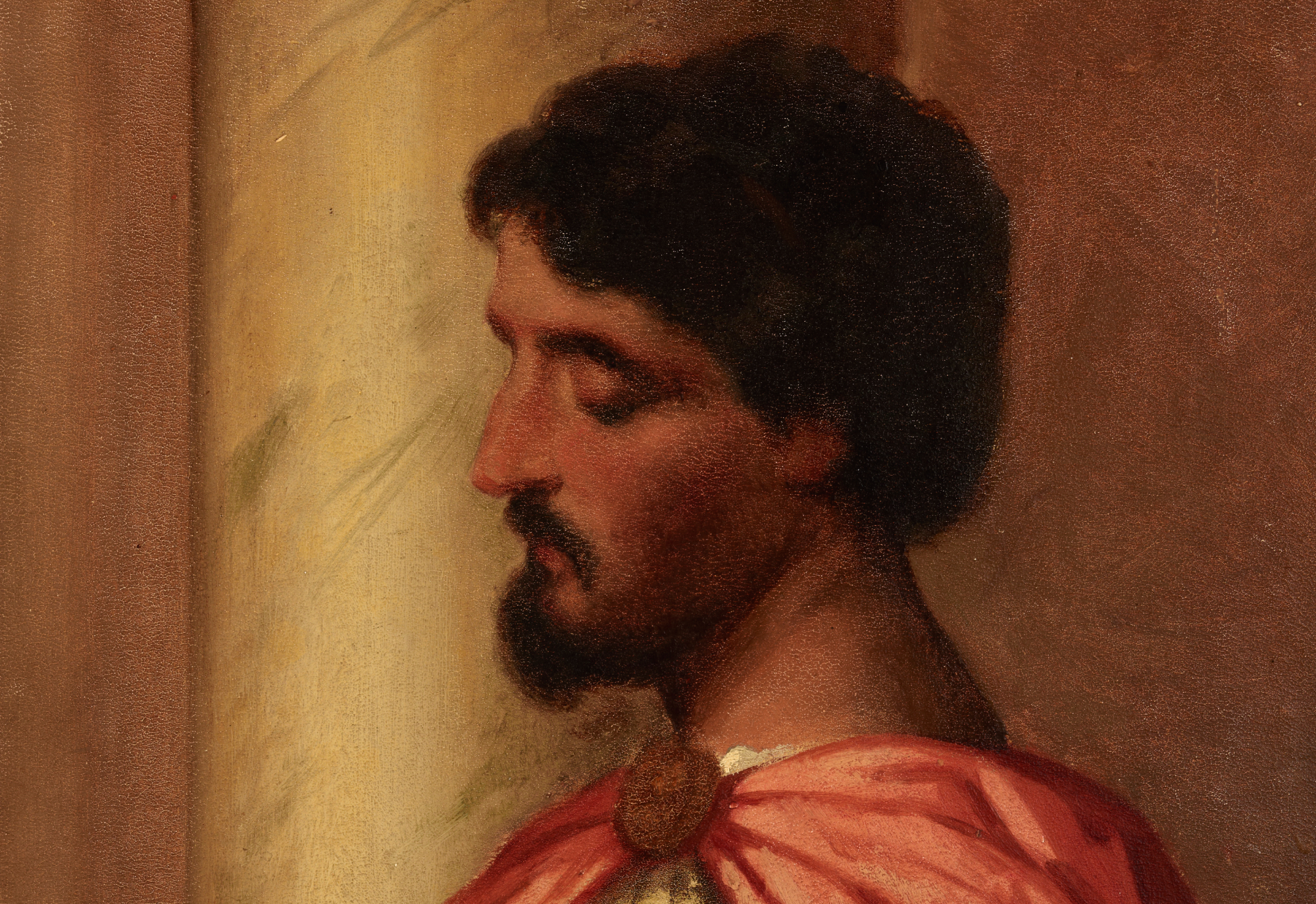 Artur Grottger, Wikimedia Commons
Artur Grottger, Wikimedia Commons
Primus pilus
Spurius only agreed to return to duty if he was able to keep the position he had attained before retiring. Primus Pilus, or “first spear”, was the mark of a senior centurion. Spurius was awarded Rome’s Civic Crown six times, in recognition of his bravery and skill in battle.
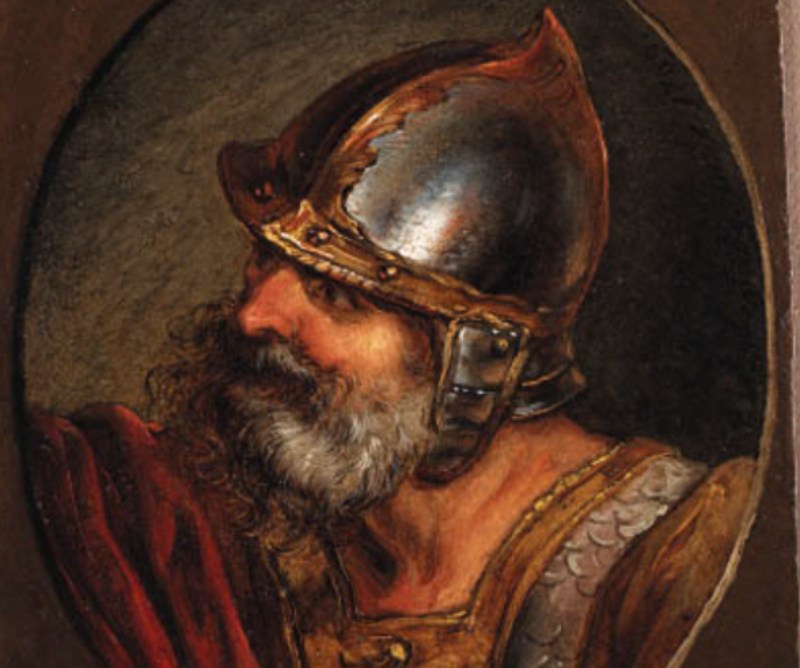 Philip James de Loutherbourg, Wikimedia Commons
Philip James de Loutherbourg, Wikimedia Commons
Lü Bu
Lü Bu was born in the north of China and became a highly-regarded leader and fighter during a turbulent time in China’s history. He was described by a biographer as a “powerful warrior” with the “might of a tiger”.
Versatile weaponeer
In his time, Lü Bu was known for two things: he was a brutal mercenary who would do whatever was necessary to win a battle, and he was a master of many weapons. This ruthless warrior was said to be a master of the sword, the bow and arrow, and of hand-to-hand fighting techniques.
Tomoe Gozen
A famous Japanese warrior, Tomoe Gozen’s prowess on the battlefield in described in the 14th century text The Tale of Heike. She is described as both a fierce warrior and a great beauty. Her skills with the sword, the bow, and the horse made her a match for any other warrior of her time.
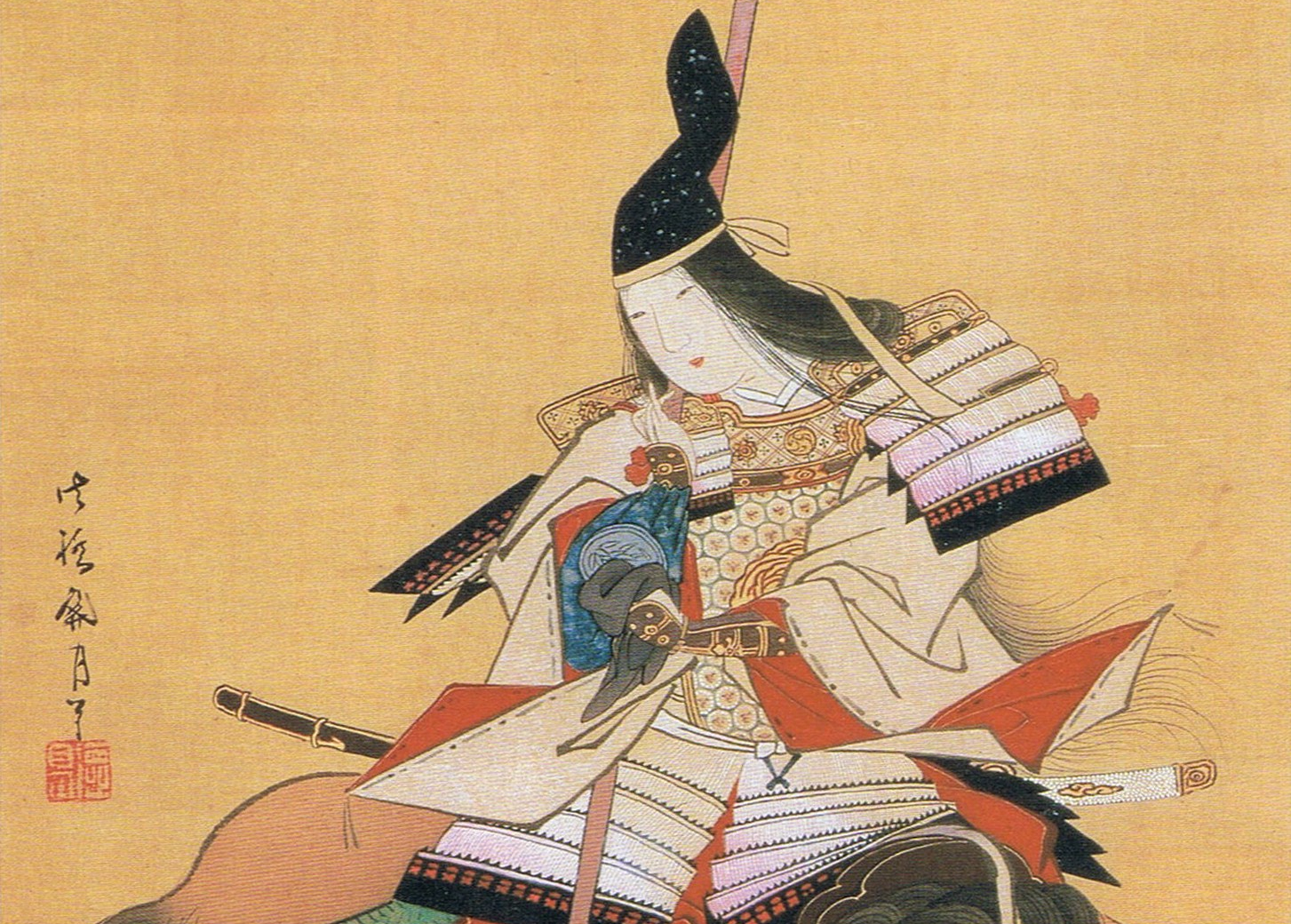 Kangetsu Shitomi, Wikimedia Commons
Kangetsu Shitomi, Wikimedia Commons
Not-so-civil war
Gozen rose to fame during an era of civil war in Japan known as the Genpei War. Like Leonidas of Sparta, she led small forces against much larger rival armies and emerged victorious. During the Battle of Awazu she slew famous samurai Uchida Ieyoshi, a battle that helped secure her place in history.
 Ishikawa Toyonobu, Wikimedia Commons
Ishikawa Toyonobu, Wikimedia Commons
Sun Tzu
In the 1980s, Sun Tzu’s famous treatise The Art of War became a best-selling book for business people. The strategy and philosophy set down by the famous Chinese warrior had an unforeseen application on the battlefields of Wall Street.
 663highland, CC BY-SA 3.0, Wikimedia Commons
663highland, CC BY-SA 3.0, Wikimedia Commons
Warrior and author
In his own time, Sun Tzu was considered to be one of the great military strategists of the late Chou dynasty. Despite his prowess as a warrior and tactician, it is for his famous book that Sun Tzu will forever be remembered, a book that continues to influence thought and culture hundreds of years later.
William Marshal
The beginnings of life for a knight in the medieval period involved becoming a squire for a noble who would then train the youngster in the arts of combat and chivalry. This is how William Marshal’s story began, and he soon became famous as one of the greatest warriors of his time.
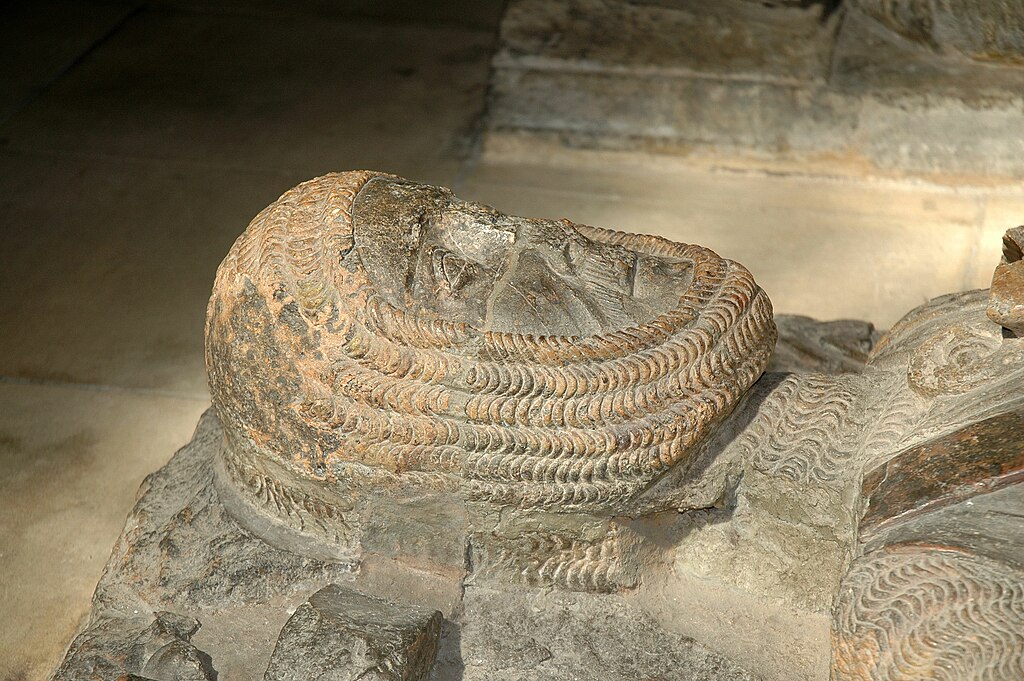 Kjetilbjørnsrud, CC BY-SA 3.0, Wikimedia Commons
Kjetilbjørnsrud, CC BY-SA 3.0, Wikimedia Commons
A warrior until the end
Considered to be one of the greatest knights who ever lived, William Marshal was skilled on both the battlefield and the tournament field. He fought alongside Richard the Lionheart during his campaigns, and kept fighting right until the end, losing his life at the ripe old age of 70 during the Battle of Lincoln.
Elaine Mordeaux
Not all famous warriors hail from cultures hundreds of years old. Elaine Mordeaux is considered one of the great fighters of the 20th century. Her exploits and bravery were instrumental in winning various battles in France during the Second World War.
 Malindine E G (Lt), Tanner (Lt), Wikimedia Commons
Malindine E G (Lt), Tanner (Lt), Wikimedia Commons
Hero of WWII
As a member of the French Resistance in Nazi-occupied France, Mordeaux led fighters against German tanks in June of 1944, an action that assisted in the success of the D-Day landing. Her resistance group featured a large number of women, and Elaine gave her life to her cause when she was shot by a sniper during a mission.
Jack Churchill
Another hero of the Second World War, Jack Churchill sounds like something out of a movie. As well as being a fierce warrior, Churchill spent time as a male model, film actor, and surfer. This eccentric adventurer was known as “Mad Jack”, and often went into battle with a sword strapped to his belt.
Commanding commando
Mad Jack took part in campaigns throughout Europe and the Middle East suring World War II, including missions in France, Norway, Italy, and Yugoslavia. He is famous for having captured over 40 enemy troops in 1943 after sneaking himself and one other man into an enemy encampment.
Vlad the Impaler
A mightly Romanian leader and warrior, Vlad fought against the Ottoman empire during the 13th century. He was famously brutal, often leaving his enemies impaled on the battlefield as a warning to others. His tactics inspired many legends about him, including a very famous novel…
 Theodor Aman, Wikimedia Commons
Theodor Aman, Wikimedia Commons
The truth behind the vampire
Vlad was also known by the name Dracula, and became the inspiration for Bram Stoker’s classic novel Dracula. Legends of Vlad drinking the blood of his enemies helped create modern-day depictions of vampires, and his namesake Dracula is still the most famous bloodsucker in literature.
 Unknown Author, Wikimedia Commons
Unknown Author, Wikimedia Commons
Attila the Hun
A Hungarian leader and warrior, Attila fought against the Roman Empire as it encroached on his native lands. He claimed that he fought with the Sword of Ares, the Greek god of war, a claim which surely contributed to the legend of his ferocity and struck fear in the hears of his foes.
A warrior without mercy
Attila was known to be extremely violent and without mercy. Historians claim that the terror he inspired in others actually gave his great pleasure. Roman bureacrat Jordanes called him “the scourge of all lands”.










